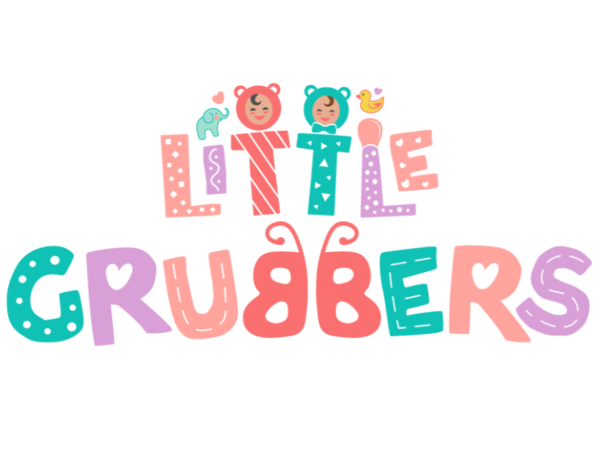Why a Calm Feeding Environment Matters
Mealtime with a baby can be a beautiful bonding experience—but let’s be honest, it can also feel like a battlefield. One moment, your little one is happily eating, and the next, there’s food on the floor, frustration in the air, and a baby refusing to take another bite.
Sound familiar? You’re not alone!
Creating a calm feeding environment is one of the best ways to help your baby feel secure, enjoy food, and develop healthy eating habits. When mealtimes are peaceful, babies are more likely to explore new foods, listen to their hunger cues, and eat without stress.
Let’s dive into simple, effective ways to bring more calm to the table (literally and figuratively).

1. Set a Consistent Mealtime Routine
Babies thrive on predictability. Having a consistent feeding routine helps your little one feel secure and understand that mealtime is a normal part of the day.
Try These Tips for a Stress-Free Mealtime Routine:
✔ Serve meals and snacks at the same times every day – This helps your baby regulate hunger and fullness cues.
✔ Create a pre-meal ritual – Wash hands, sing a little song, or let your baby sit in their high chair a few minutes before eating.
✔ Give a 5-minute warning – Babies do better when they know what’s coming. Saying, “In five minutes, we’re going to eat!” helps them mentally prepare.
💡 Pro Tip: Keep mealtimes short and sweet—aim for 15-30 minutes to prevent frustration.
2. Keep the Feeding Space Comfortable & Distraction-Free
Your baby’s eating environment plays a huge role in how they experience food. If the room is too noisy, overstimulating, or uncomfortable, your little one might struggle to focus on eating.
Create a Relaxing Atmosphere by:
🔹 Choosing a consistent eating spot – Whether it’s a high chair at the table or a booster seat, a familiar space helps babies feel safe.
🔹 Minimizing distractions – Turn off the TV, lower background noise, and avoid handing your baby a toy during meals.
🔹 Keeping the lighting soft – Bright, harsh lights can make babies feel overstimulated.
🚨 Avoid screen time at meals – Watching TV or using a tablet can make babies less aware of hunger/fullness cues, leading to mealtime battles later.

3. Keep Your Own Energy Calm and Positive
Babies are incredibly sensitive to their parents’ emotions. If you’re feeling stressed about mealtime, your baby will pick up on that energy and may become anxious about eating.
How to Stay Calm at the Table:
✔ Take deep breaths before feeding time—your mood sets the tone!
✔ Use positive language – Instead of “Eat your veggies,” try “This carrot is crunchy and sweet!”
✔ Don’t force bites – Let your baby decide how much to eat, even if it’s less than you expected.
💡 Remember: Babies have small stomachs and variable appetites. Some days they’ll eat a lot, some days barely anything—and that’s okay!
4. Offer a Variety of Textures and Let Baby Explore
A calm feeding environment also means low-pressure eating. Babies should feel free to explore their food without stress.
Encourage a Positive Eating Experience by:
🥄 Letting your baby self-feed with spoons, fingers, or soft foods
🍓 Offering a variety of colors, shapes, and textures to keep things exciting
🖐 Allowing some mess! Babies learn by touching, squishing, and playing with food—it’s part of the process!
💛 Need a self-feeding tool? The Little Grubbers 3-in-1 Baby Spoon™ is perfect for babies learning to feed themselves!
5. Follow Your Baby’s Hunger and Fullness Cues
One of the biggest stressors during mealtime is worrying about how much your baby eats. The key? Trust your baby’s appetite!
Signs Your Baby is Hungry:
✔ Reaching for food or opening their mouth
✔ Excited when food is presented
✔ Leaning forward toward the spoon
Signs Your Baby is Full:
✔ Turning away from the spoon
✔ Closing their mouth or pushing food away
✔ Getting distracted or fussy
🚨 Don’t force extra bites! Pressuring your baby to eat can create negative associations with food. Instead, respect their hunger cues and let them stop when they’re full.
6. Keep Mealtimes Fun and Stress-Free
When feeding turns into a battle, it’s no fun for anyone. Keep mealtime light, engaging, and pressure-free to help your baby develop a positive relationship with food.
Ways to Make Mealtime Enjoyable:
🎶 Play soft background music for a relaxing vibe
👶 Eat together as a family to encourage healthy habits
🥳 Make silly sounds or smile while offering food—babies love playful interactions!
💡 Tip: Some days will be messier or more frustrating than others—and that’s okay! What matters is creating a consistent, loving environment where your baby can enjoy food at their own pace.
Final Thoughts: A Calm Feeding Environment Starts with You
Mealtime doesn’t have to be stressful! By creating a routine, setting up a peaceful space, staying relaxed, and letting your baby explore food freely, you can transform mealtimes into a positive experience for both of you.
💛 Want to make self-feeding easier? Check out the Little Grubbers 3-in-1 Baby Spoon™! Designed for little hands, it helps babies develop confidence while eating.
🛒 Grab yours here.
💬 How do you create a calm feeding environment at home? Share your tips in the comments below! 😊

